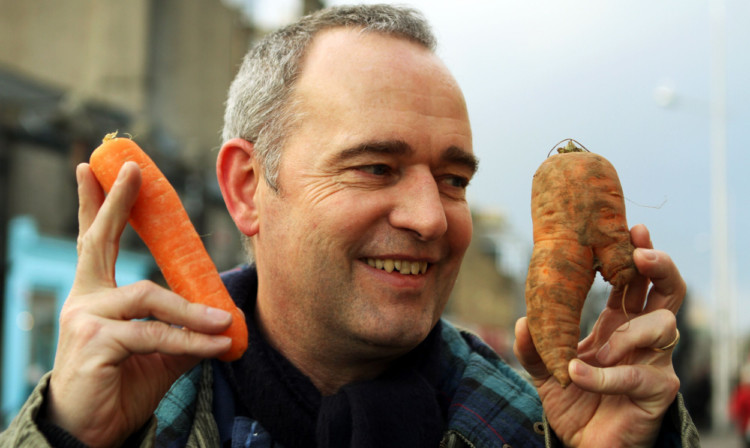As Tesco blasts fussy customers for wanting perfect-looking produce, Jack McKeown hits the streets of Broughty Ferry to find out whether people prefer washed or wonky carrots.
Tesco has turned on its own customers, saying fussy shoppers are a major cause of food waste. The supermarket giant threw away 30,000 tonnes of food in the first half of this year. It is blaming some of this waste on customers picking the “cream of the crop” and leaving blemished or oddly-shaped fruit and veg to languish on the shelves.
The European Union used to bear the brunt of the ire for this prejudice against plainer produce because of rules standardising the shape of fruit and veg. Bowing to pressure over the appalling levels of waste, however, the EU relaxed rules on misshapen fruit and veg in 2008, scrapping guidance altogether on 26 types of produce.
Supermarkets have stuck to the higher standard, however, and the public now seems to demand the most photogenic foodstuff.
To find out if this was the case, The Courier visited Broughty Ferry to carry out its own research into the matter.
Carole Sommerville and Jan McTaggart own Clementine of Broughty Ferry. The greengrocer sells fruit and vegetables of all shapes, sizes and hues. Two baskets of carrots catch your correspondent’s eye. One contains scrupulously clean comestibles while the other is stocked with more idiosyncratic carrots, their flesh still clothed in soil from the field of their birth.
The dirty carrots come from the farm of Drew Donnachie near Coupar Angus. “Dirty carrots are better,” Jan says. “They haven’t washed off the enzymes that naturally protect the carrot. They act as a natural preservative so you get more flavour.”
Although the “good” carrots are also Scottish, they are sent to England to be cleaned before being returned to Scotland to go on sale.
“We do sell a lot of dirty carrots now,” Carole says. “Many of our customers prefer them. But it took us quite a long time to convince them.”
The greengrocers still have a hard time persuading people to try anything new. Holding up a dull-looking globe, Carole explains: “This is a golden beetroot. They’re amazing you can do loads with them but people are quite cautious and we just can’t get anyone to try them.
“We had some purple carrots last week but we just could not shift them. People like what they know and it’s very difficult to get them to try something a bit out of the ordinary.”
Not all customers prefer their produce to look conventional, though.
“We had a customer called Katy who liked buying the most lumpy and misshapen fruit and veg because it amused her,” Jan recounts. “I started putting the funniest stuff in the shop window so she would see it on her way to the station in the morning. We had a really rude looking butternut squash for a while.”
After borrowing a straight, freshly washed carrot that even the most stringent EU bureaucrat armed with a ruler, compass and set square couldn’t find fault with and the most lumpen of the dirty carrots, it’s time to find out what the people of Broughty Ferry make of this carrot conundrum.
Colin Kilpatrick, 45, shows no hesitation in choosing the dirty one. Justifying his potentially controversial decision he says: “That one’s definitely going to taste nicer.”
His choice of substance over style is backed up by our next carrot chooser. Linda Walsh, 49, also reaches for the more raggedy root vegetable.
Her husband Richard, 61, agrees. “I’d go for that one just to get up the EU’s nose,” he grins.
His fellow produce picker Dermot Curnyn, 56, also goes for the less comely carrot. “Once you put it in a soup, who cares what it looks like?” he declares.
However, May McWhinney, 86, does not approve of this devil-may-care attitude to a carrot’s appearance. “I’d definitely go for the nice straight, clean one,” she says without hesitation. “It looks much better.”
She is not the only one to be bewitched by the cleaner carrot. Derek Hammond (66) goes straight for the gleaming orange vegetable. “I’d choose the clean one every time,” he says.
“But, then, that’s because I’ve been conditioned by advertising to do so.”
So there we have it. The people of Broughty Ferry have spoken. And, by a margin of four-to-two, they have chosen the less conventionally attractive of our two carrots.
Beauty, it seems, is more than skin deep.
